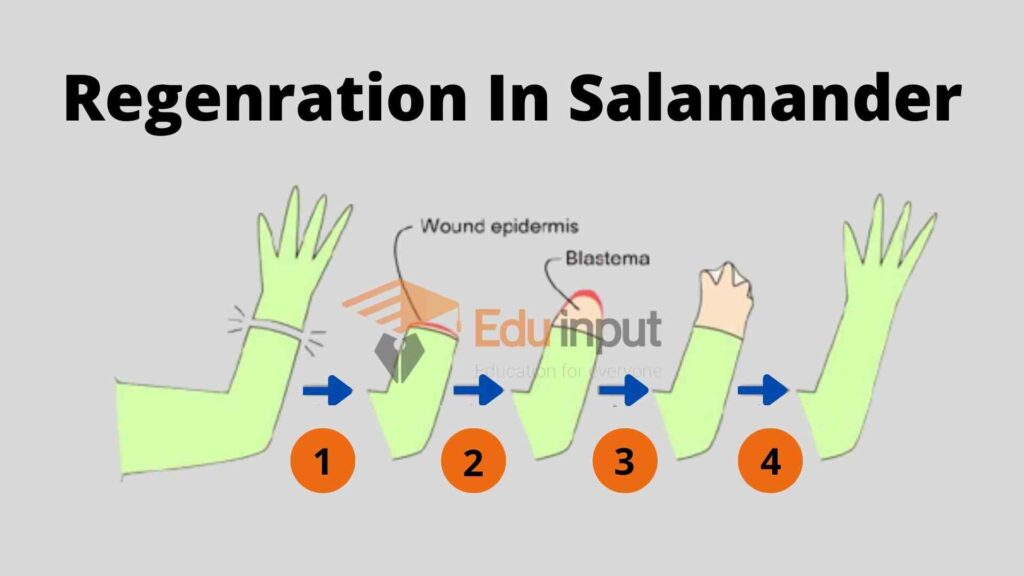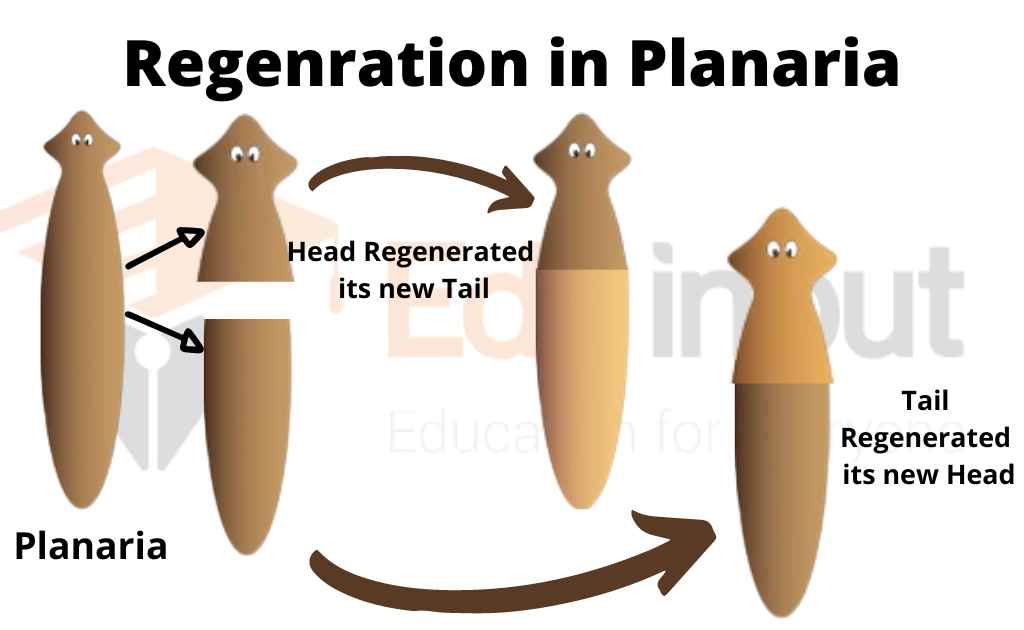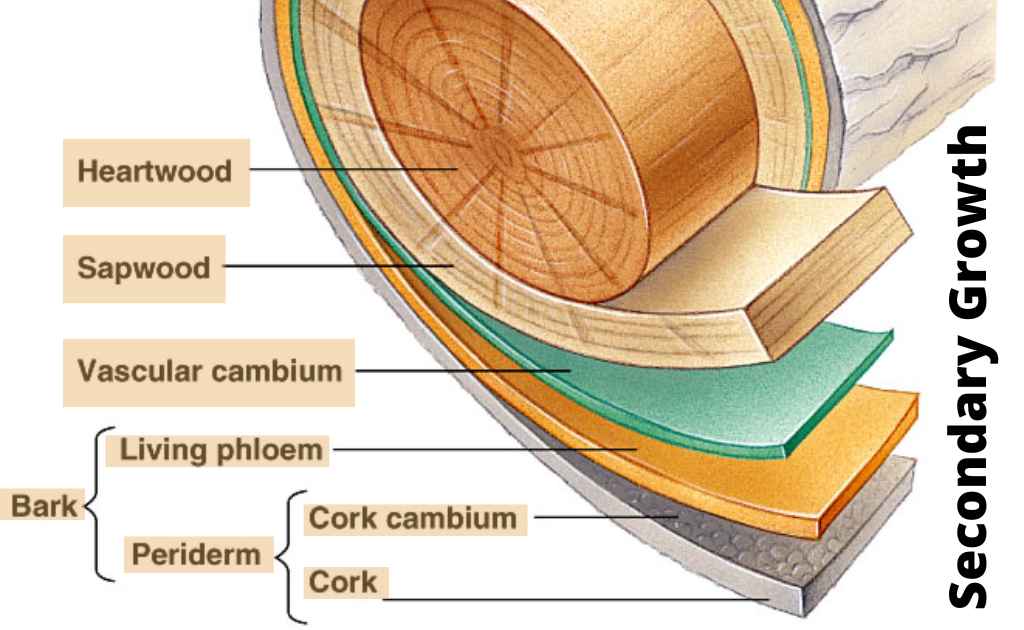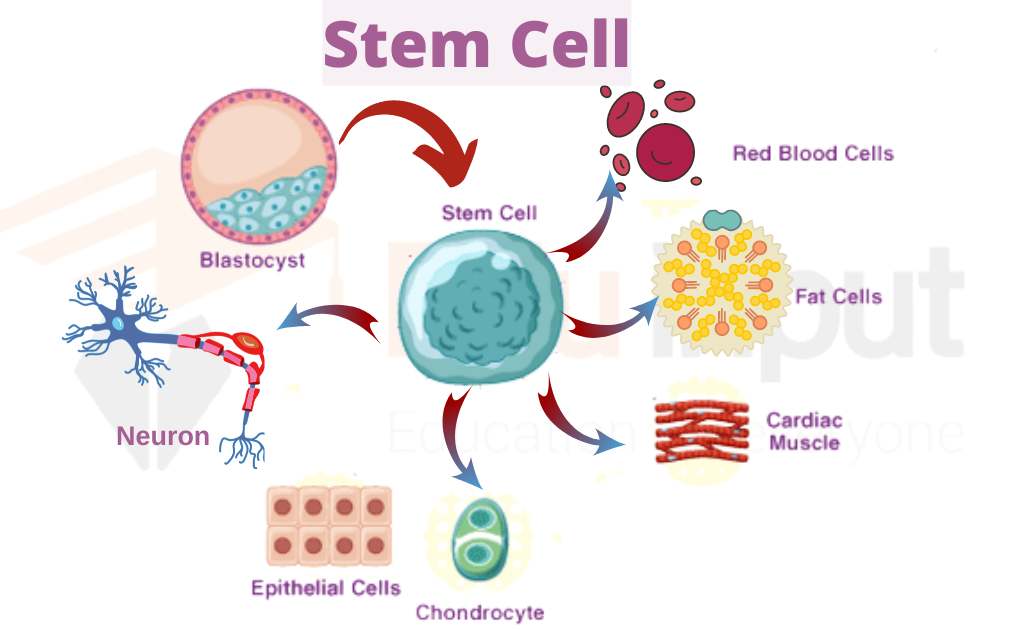Types of Regeneration | Regeneration in Planaria | Regeneration in Salamander
Regeneration is the process by which an organism regrows a lost or damaged body part. This process occurs in Salamanders, planarians, and several other species. Human organs such as the liver and skin also regenerate when they are damaged.
This event can happen in numerous ways by using pluripotent or tissue-specific stem cells. There is also a type of regeneration that happens without stem cells at all.
Cilia and flagella of single-celled organisms can regrow within a few hours of being cut off. Even in cells that can’t divide, such as nerve cells, there is a continuous flow of cytoplasm from the cell body into the nerve fibers.
Example of Regeneration
Following organisms exhibit regeneration for their asexual reproduction.
• Planaria
• Jellyfish
• Lobsters
• Hydra
• Lizards
• Star Fish
• Planaria
• Sea Cucumber
Types Of Regeneration
Regeneration is of two main types:
Reparative regeneration
Multicellular organisms have the power to repair certain damaged cells in their bodies, a common ability among both invertebrates and vertebrates. In some cases, such as with humans, individual cells may not be able to regenerate on their own.
Restorative Regeneration
Organisms that can regenerate lost body parts or even whole bodies are relatively common in the animal kingdom, especially among invertebrates. This process, known as regeneration, can occur through epimorphosis or morphallaxis. The ability to regenerate lost body parts varies among different groups of animals.
Modes Of Regeneration
There are two basic modes of the regeneration process.
Main pattern of Regeneration
All Organisms don’t regenerate in the same way. For plants and creatures like the hydra and jellyfish, missing parts are replaced by reorganizing existing ones.
The wound heals and the surrounding tissues reorganize themselves into whatever parts were cut off. This process of reorganization, called morphallaxis, is the most efficient way for simple organisms to regenerate.
Higher animals with more complex bodies regenerate differently, usually by growing a specialized bud.
Atypical Regeneration
Sometimes what comes back is not exactly as it was before. And sometimes, you don’t even have to lose anything for regeneration to occur. It’s also not unusual for a regenerated part to be missing some segments. Earthworms usually regenerate only five segments, no matter how many segments it has lost.
From Where Do Regeneration Material Originate?
When an appendage is cut off, a new one will grow back in its place. This is because the cells near the site of amputation dedifferentiate and form a rounded mass of cells called blastema. The cells at the tip of the blastema divide and grow, while those closer to the old tissues of the stump differentiate into lost tissue
Regeneration In Salamander (Amphibian)
Lizards can regenerate their tails if they are cut off. This process starts with the formation of a blastema. The newly regenerated tail will have a cartilage tube surrounding the spinal cord. The proximal end of the cartilage tube will grow and harden, but the distal end will not.

Regeneration In Planaria (Flatworms)
Planarian flatworms are pretty amazing creatures. If you cut one of them in half, each piece will grow back to the end that is missing. The cells in the areas of the body where the cut was made form blastemas, which become either a head or a tail, depending on which side they are on.

Related FAQs
What is regeneration?
Regeneration is the process by which an organism regrows a lost or damaged body part.
Which organisms exhibit reproduction through regenration?
Following organisms exhibit regeneration for their reproduction.
• Planaria
• Jellyfish
• Lobsters
• Hydra
• Lizards
• Star Fish
• Planaria
• Sea Cucumber
What are modes of regeneration?
There are two basic modes of the regeneration process.
Main pattern of Regeneration
Atypical Regeneration
What is Restorative Regeneration?
Organisms that can regenerate lost body parts or even whole bodies are relatively common in the animal kingdom, especially among invertebrates. This process, known as regeneration, can occur through epimorphosis or morphallaxis. The ability to regenerate lost body parts varies among different groups of animals.

 written by
written by 





Leave a Reply